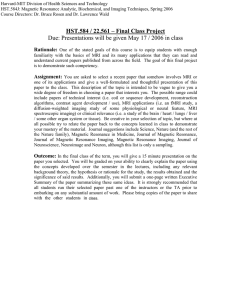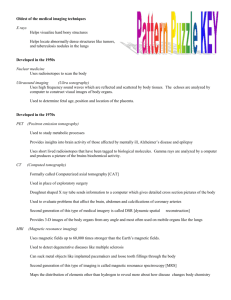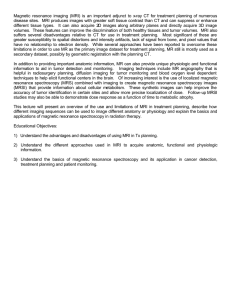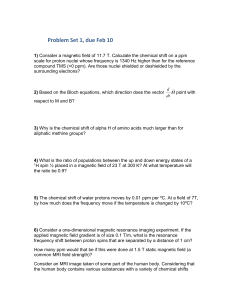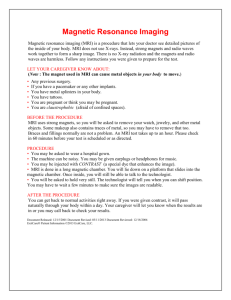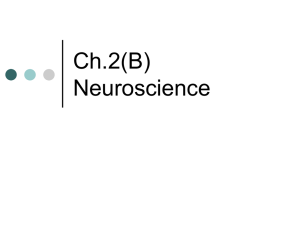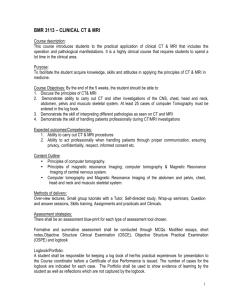The Brain - AP Psychology Community
advertisement
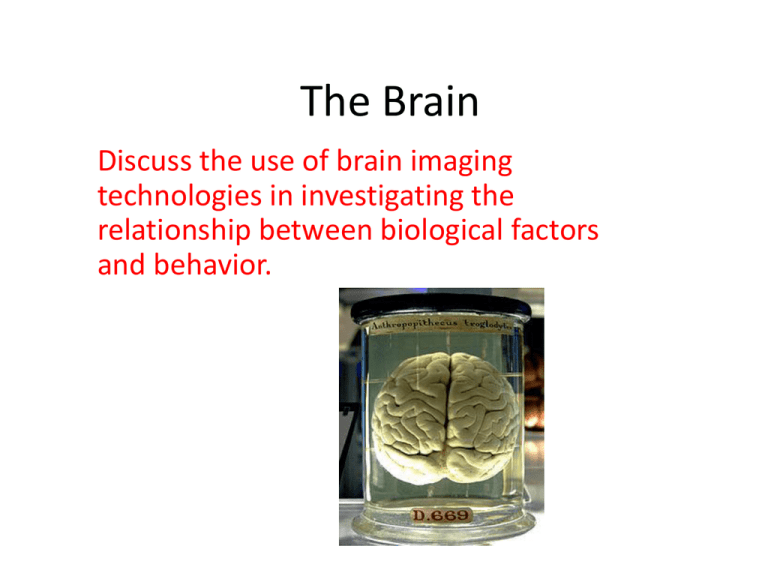
The Brain Discuss the use of brain imaging technologies in investigating the relationship between biological factors and behavior. Modern technology and localization of function Electroencephalogram (EEG) • Developed in 1929 by Hans Berger • Electrodes are placed on the outside of the head using a special cap or helmet. • Detect electrical activity in the brain. Electroencephalogram (EEG) • Most widely used in sleep research. • It can measure what stage of sleep you are in. • 1st, 2nd, 3rd, 4th • REM (Rapid Eye Movement) • Not that accurate in research showing us localization of function. Computed Tomography • Combines computer and x-ray technology. • Images are taken from all sides and look like slices of the brain. • GREAT for showing structural changes in the brain (like a tumor). Magnetic Resonance Imaging (MRI) • Our bodies are about 60% water H2O. • Uses a strong magnetic field to push one proton of the H2O off its orbit. • When magnetic pulse stops…the proton rushes back to its orbit. • It emits a small radio frequency on its way back. • The machine can detect that radio frequency..taking a picture of it. Magnetic Resonance Imaging (MRI) • Normally much more safe that CT scan. • But REALLY bad it you have metal inside of you…. • Very precise images from any angle. Functional MRI (fMRI) • Uses MRI technology but takes pictures of only active areas (areas with more blood). • Great for showing brain activity. Positron Emission Tomography (PET) • Inject a radioactive substance in an individual. • Usually some radioactive sugar that produces gamma rays. • When the brain metabolizes (burns) the sugar, the PET machine will measure it. • Great diagnostic tool for showing abnormalities in brain activity.

